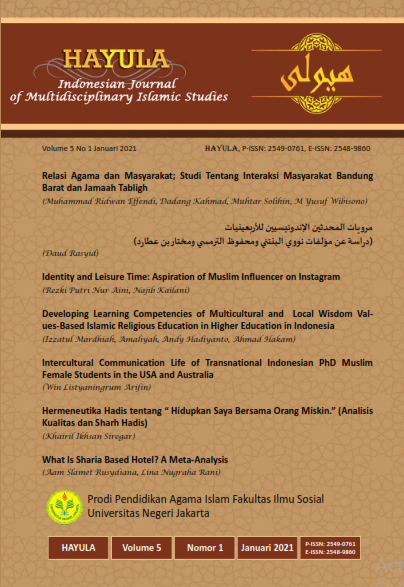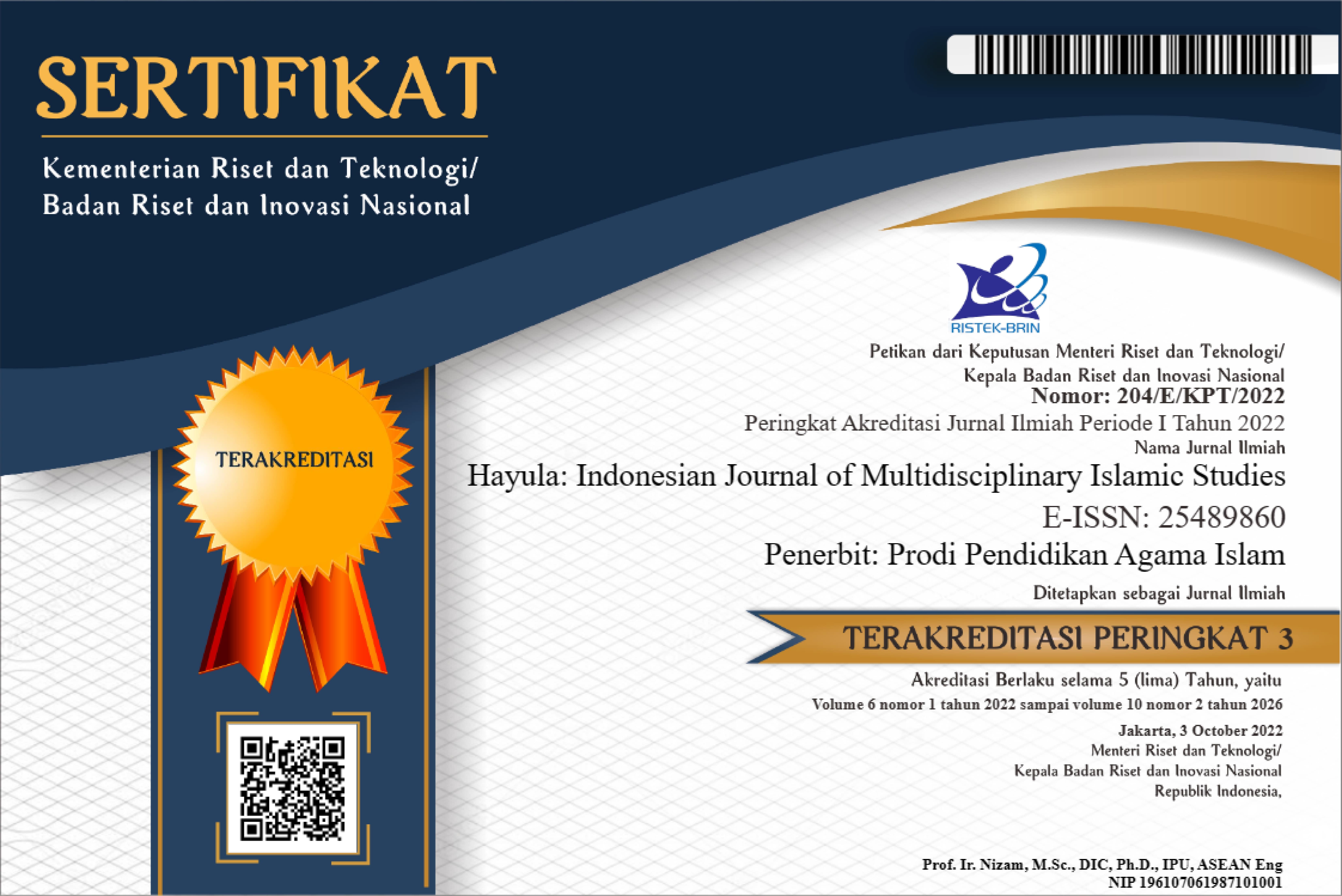Intercultural Communication Life of Transnational Indonesian PhD Muslim Female Students in the US and Australia
DOI:
https://doi.org/10.21009/005.01.05Keywords:
intercultural communication, educated Muslim women. transnationalsAbstract
This study aimed at investigating the intercultural communication life of Indonesian PhD Muslim female students in the USA and Australia as transnationals. They face not only the language hardship but also the newest environments challenge both in academic and social setting. Stereotype, stigmatization, discrimination, and other forms of oppressions appear in relation to their visual identity. Applying Stella Ting-Toomey’ Identity Negotiation Theory, the study is to answer questions: (1) How far is the influence of the intercultural communication of these students living in a country? and (2) To what extent does intercultural communication competence influence the success of these students? This study is a qualitative descriptive based on the video/audio or diary tape of the respondents in the USA and Australia. To sum up, the video/audio or diary tape revealed that the success of intercultural communication on the these Indonesian Phd Muslim women students is influenced by knowledge, motivation, and skill obtained from the challenges in daily experiences both in academic and social life. Later, those three elements are very essential components in the ‘mindful/effectiveness intercultural communication’. Those elements become competence for Indonesian PhD Muslim women students to form adaptive strategies to overcome their internal and external situation. The process of intercultural communication might be challenging. However, the competence reveal during their first year living in a new country will be solution in facing problems or minimizing difficult situations in future years ahead.
References
Andrian, E. (2015). Remedi Miskonsepsi Beberapa Konsep Listrik Dinamis Pada Siswa SMA Melalui Simulasi PhET Disertai LKS . Jurnal Pendidikan Fisika, 3(4), 362 – 369.
Berg, E. (1991). Miskonsepsi Fisika dan Remediasi. Salatiga: Universitas Kristen Satya Wacana.
Caleon, I. S. (2010). Do Students Know What They Know and What They Don’t Know? Using a Four-Tier Diagnostic Test to Assess the Nature of Students’ Alternative Conceptions (Vol. 40). Res Sci Educ.
Dedah Siti Jubaedah, I. K. (2017). Pengembangan Tes Diagnostik Berformat Four Tier Untuk Mengidentifikasi Miskonsepsi Siswa Pada Topik Usaha dan Energi. Prosiding Seminar Nasional Fisika. VI, pp. 35-40. Jakarta: UNJ.
Ismiara Indah Ismail, A. S. (2015, Juni 8 - 9). Diagnostik Miskonsepsi Melalui Listrik Dinamis Four Tier Test. Simposium Nasional Inovasi dan Pembelajaran Sains, 381-384.
Law, J. F. (2010). Diagnosis of Student Understanding of Content Specific Science Areas Using On-Line Two-Tier Diagnostic Tests. Australia: Curtin University of Technology.
Lin, S. (2004). Development and Application of a Two-Tier Diagnostic Test for High School Students’ Understanding of Flowering Plant Growth and Development. International Journal of Science and Mathematics Education, 2, 175-199.
Mosik. (2010). Usaha Mengurangi Terjadinya Miskonsepsi Fisika Melalui Pembelajaran Dengan Pendekatan Konflik Kognitif. Jurnal Pendidikan Fisika Indonesia, 6, 98-103.
Qisthi Fariyani, A. R. (2017). Four Tier Diagnostic Test To Identify Misconceptions In Geometrical Optics . UNNES Science Education Journal, 6(3), 1725-1729.
Qisti Fariyani, A. R. (2015). Pengembangan Four Tier Diagnostic Test untuk Mengungkap Miskonsepsi Fisika Siswa SMA Kelas X. Journal of Innovative Science Education, 4(2), 41-49.
Setianingsih, E. (2018). Identifikasi Miskonsepsi Materi Medan Magnet Menggunakan Three Tier Test Pada Siswa SMA di Kabupaten Jember. Program Studi Pendidikan Fisika, Jurusan Pendidikan MIPA, Fakultas Keguruan dan Ilmu Pendidikan. Jember: Universitas Jember.
Sugiyono. (2013). Metode Penelitian Pendidikan. Bandung: Alfabeta.
Zaleha, dkk. (2017). Pengembangan Instrumen Tes Diagnostik VCCI Bentuk Four-Tier Test pada Konsep Getaran. Jurnal Pendidikan Fisika dan Kelimuan (JPFK), 3, 36-42.
Downloads
Published
How to Cite
Issue
Section
License
Authors who publish with this Journal agree to the following terms:
- Author retain copyright and grant the journal right of first publication with the work simultaneously licensed under a creative commons attribution licensethat allow others to share the work within an acknowledgement of the work’s authorship and initial publication of this journal.
- Authors are able to enter into separate, additional contractual arrangementfor the non-exclusive distribution of the journal’s published version of the work (e.g. acknowledgement of its initial publication in this journal).
- Authors are permitted and encouraged to post their work online(e.g. in institutional repositories or on their websites) prior to and during the submission process, as it can lead to productive exchanges, as well as earlier and greater citation of published works.
Users/public use of this website will be licensed to CC BY







